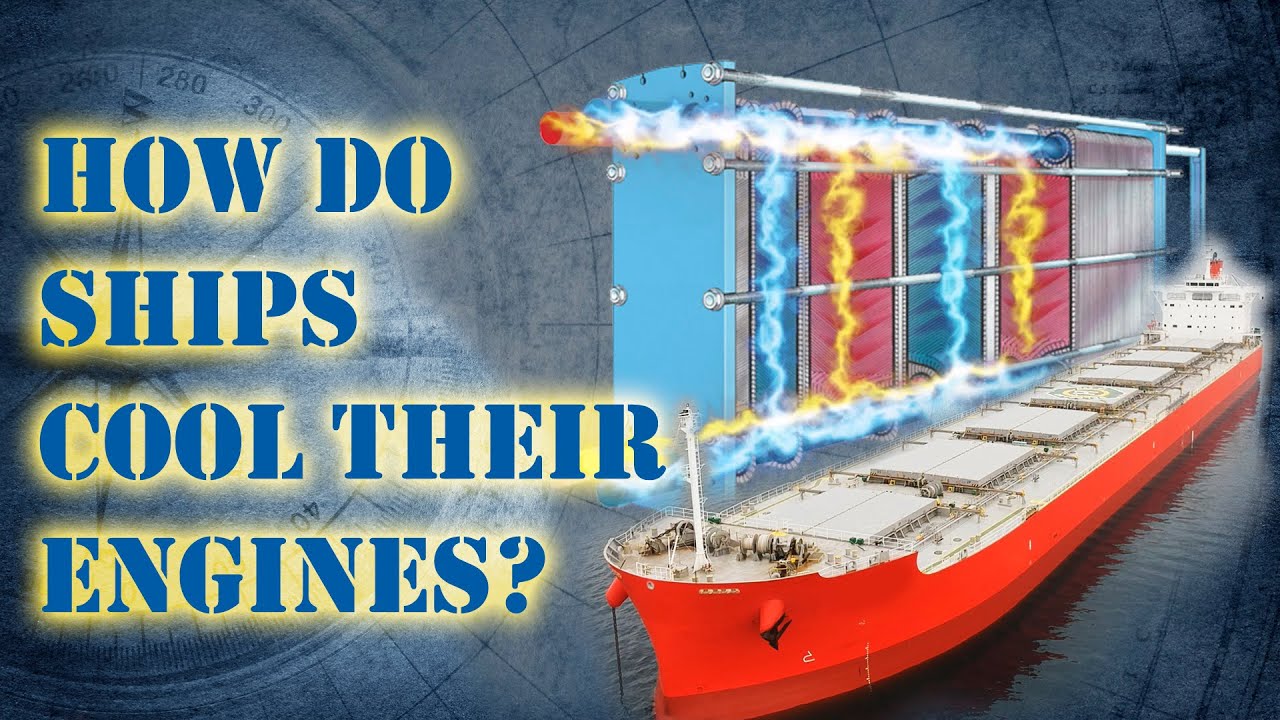How Ships Convert Sea Water to Fresh Water | Chief MAKOi Study Call Ep 04
Summary
TLDRIn this episode of Study Hall, Chief McCoy explains how ships produce fresh water from seawater using distillation, a process of evaporation and condensation. Ships on coastal voyages can get fresh water from suppliers, but ocean-going vessels must generate their own. Distillation plants aboard ships can produce 15 to 50 tons of fresh water daily. The process involves heating seawater to create steam, which then condenses into fresh water when cooled, leaving behind salt and minerals. Key components of the distillation plant include the evaporator, condenser, ejector pump, and Solano meter, which ensures the purity of the fresh water produced.
Takeaways
- 🚢 Ships require fresh water for various purposes, which cannot be met by seawater alone.
- 🌊 For coastal voyages, ships can easily obtain fresh water from suppliers, but ocean-going vessels must produce their own.
- 💧 Fresh water generators on ships use either distillation or reverse osmosis, with distillation being more common in commercial shipping.
- 🔥 Distillation involves purifying liquid through evaporation and condensation, leaving behind heavier minerals like salt.
- 🌡️ Distillation plants on ships are designed to operate efficiently when the main engine is running, utilizing waste heat from the engine.
- 🏺 The distillation process on ships involves an airtight casing with separate sections for evaporation and condensation.
- 💧 Seawater is heated in the evaporator, turning into steam, which then condenses into fresh water in the condenser.
- 🔬 The purity of the fresh water is checked using a Solano meter, which measures electrical conductivity to determine salt content.
- 🔄 If the fresh water's salinity is above 10 ppm, it is recycled back into the evaporator; if below, it's stored for use.
- 🔧 Distillation plants can be of two types: tube type or plate type, both operating on the same principle of heat exchange and vacuum creation.
Q & A
How does a ship obtain fresh water for use during coastal voyages?
-For ships doing exclusively coastal voyages, fresh water is usually supplied when they are in port. They place an order, and a supplier comes to connect a hose and fill up the water tanks.
What is the primary method used by ocean-going vessels to produce fresh water during long voyages?
-Ocean-going vessels produce fresh water using a freshwater generator, which typically operates on the principle of distillation or, less commonly, reverse osmosis.
What is the basic principle behind the distillation process used to produce fresh water on ships?
-Distillation is the process of purifying a liquid through evaporation and condensation. Seawater is heated to create steam, which leaves behind heavier minerals like salt. The steam is then cooled and condenses back into liquid form, now free of salt, to produce fresh water.
What is the typical daily fresh water production capacity of a distillation plant on a ship?
-Distillation plants on board ships are typically designed to produce between 15 to 50 tons of fresh water per day, depending on the ship type and fresh water requirements.
What are the two main types of distillation plant designs used on ships?
-Distillation plants on ships are either of the tube type or plate type designs, with the principle of operation being the same for both.
Why are distillation plants used when the ship is underway, and how does this relate to the seawater quality?
-Distillation plants are used when the ship is underway because seawater is cleaner in the deep and open sea compared to near land where it might contain mud and other contaminants. Additionally, the heating medium for the evaporator comes from the main engine jacket water, which is more readily available when the ship is in motion.
How does the ejector pump contribute to the distillation process on a ship?
-The ejector pump creates a vacuum inside the distillation plant's shell by using the venturi effect. This vacuum lowers the atmospheric pressure inside the shell, allowing seawater to boil at temperatures lower than 100 degrees Celsius.
What is the role of the condenser in the distillation process aboard a ship?
-The condenser in the distillation process cools the steam produced by the evaporator, causing it to condense back into liquid form, now as fresh water, which is collected in the liquid receiver.
How is the purity of the fresh water produced by the distillation plant measured?
-The purity of the fresh water is measured using a Solano meter, which determines water purity in terms of salt content by measuring electrical conductivity. Pure water has high resistance to electrical flow, while salt water conducts electricity well.
What happens to the fresh water if the salinity measured by the Solano meter is above 10 ppm?
-If the salinity of the fresh water is above 10 ppm, a magnetic valve activates, diverting the flow of fresh water back into the evaporator for further processing.
Outlines

此内容仅限付费用户访问。 请升级后访问。
立即升级Mindmap

此内容仅限付费用户访问。 请升级后访问。
立即升级Keywords

此内容仅限付费用户访问。 请升级后访问。
立即升级Highlights

此内容仅限付费用户访问。 请升级后访问。
立即升级Transcripts

此内容仅限付费用户访问。 请升级后访问。
立即升级浏览更多相关视频

Ship's Fresh Water Cooling System | Study Call Ep 003 Chief MAKOi

SIMPLE DISTILLATION

Ship's Fresh Water Generator (Distillation Plant) | Starting and Stopping Procedures | Chief MAKOi

Fresh Water Generator on Ships | 3D Animated Explanation | HIMT

To Separate a Saltwater Mixture by Evaporation

Ship's Sea Water Cooling System | Study Call with Chief MAKOi episode 002
5.0 / 5 (0 votes)
